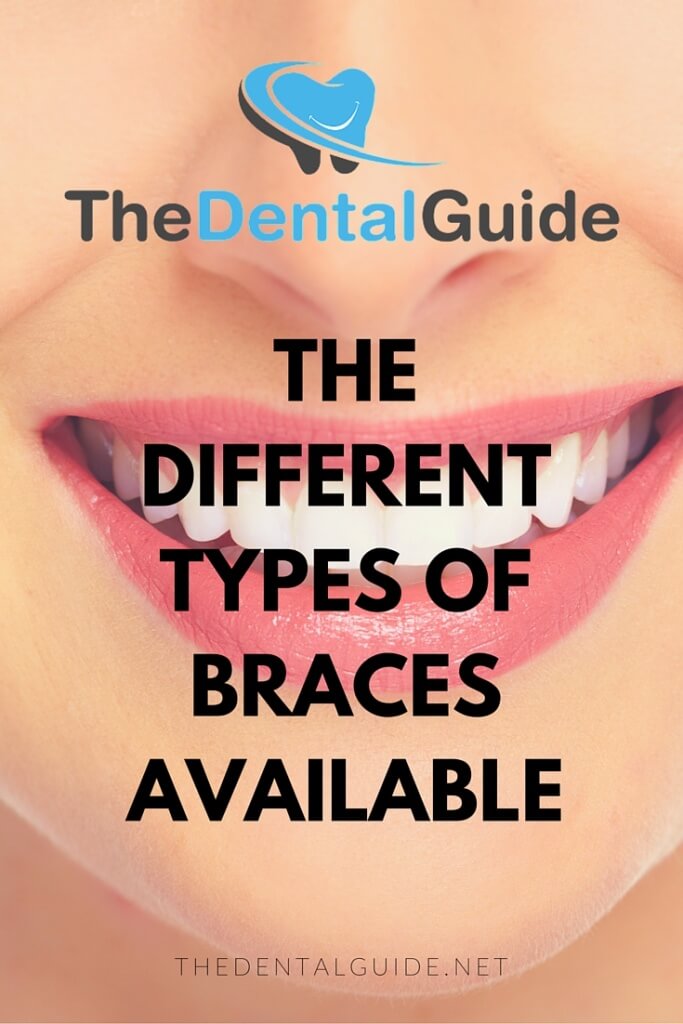There are several different types of braces available. Orthodontics treatments from your dentist are designed to straighten crooked or misaligned teeth and improve the overall appearance. Successful orthodontics treatments often involve the use of braces and can straighten teeth and move them into better positions in the mouth. Treatments involving braces can take up to two years or more, but the end result is well worthwhile.
Very often it’s children and teens that have braces fitted, but many more adults are registering for orthodontics treatments and having braces in our modern era, where personal appearance is an important aspect of daily life and a beautiful smile is a prized asset. While children’s treatments may often involve braces that are highly visible, treatments for adults may require invisible forms of braces, due to work and career requirements.
Different Types of Braces
There are a variety of braces on the modern market, it’s best to be guided by your orthodontist with regard to the treatment that is more suited to your mouth and likely to give a better end result.
Some of the different braces available include Invisalign aligners, removable braces, fixed braces, lingual braces and retainers.
Invisalign Aligners
Invisalign is a popular aligner treatment because it isn’t visible, adults are particularly fond of the Invisalign aligner methods for teeth straightening because working while wearing some types of braces can cause anxiety about appearance. With Invisalign, the near invisibility of the aligners means work colleagues won’t even notice you’re wearing braces.
The treatment involves wearing aligners for two week periods to gradually move teeth into the required places. Custom-made aligners are fabricated every two weeks to increase the required movements of teeth into the correct positions.
Fixed Braces
Fixed braces consist of small brackets fixed to the front of each tooth and held in place with adhesive, all the brackets are linked with orthodontic wires. Fixed braces are one of the most common treatments, with a variety of designs and colours for treating kids and teens, treatment can take between nine months and two years.
Eating normally is fine while wearing fixed braces, though some foods and drinks like toffees and fizzy drinks can damage the braces and orthodontists will provide the best advice on the ways to handle this. Anybody playing contact sports on a regular basis is advised to wear a gum shield while fixed braces are in place. Ceramic or clear fixed braces are available in some circumstances, your orthodontist can advise on all the different varieties of fixed braces.
Damon braces are a form of modern fixed braces and are self litigating, so there is no need for ties and tightening. Damon braces use memory wires requiring little adjustment and will move teeth fairly quickly. The system uses slide mechanisms for comfortable movement of teeth into the correct alignment. Clear braces are available for adults who prefer an invisible treatment due to career or lifestyle needs.
Removable Braces
These braces are not commonly used by modern orthodontists, however, they are useful for treating children under the age of 11. Treatments using removable braces are limited in number, however, these braces are useful for some kids. Removable braces are used to treat top teeth and consist of a plastic plate with wires and clips to fix the brace securely to teeth. These braces are removable for sports and cleaning teeth, but do need to be worn permanently if the treatment is to work successfully.
Lingual Braces
These braces are a form of fixed brace but are fixed to the back of teeth, so they are invisible to onlookers. Lingual braces are suited to treat teeth at the top or bottom of the mouth, the fact the treatment is invisible means it is an ideal option for older teens and adults. It does take several weeks to become used to the feel of the braces in the mouth, however, treatments with lingual braces work out successfully and people having lingual braces report no self-consciousness due to wearing the braces once they become accustomed to eating and speaking while wearing them. Treatments with lingual braces are generally more expensive, so they may only be available to private patients.
Functional Braces
Functional braces are used to treat children with very prominent teeth. These braces will reposition the jaw and improve the overall tooth positions. There are a number of different types of functional braces on the market, twin blocks are a popular option with some orthodontists and can be removed for cleaning, however, the braces need to be worn full time in order to achieve desired results. Once treatment with functional braces has achieved required jaw position, children will move to fixed braces so the teeth can be fully repositioned into the correct position in the mouth.
Retainers
Once a brace treatment nears its end, retainers will be used to keep teeth in place while the gums and bone adjust to the new positions of teeth. Retainers may be removable or fixed in place and it’s important that this final aspect of any orthodontics treatment is followed through to stop teeth from moving any further.
Following all the advice and guidelines issued by your orthodontist is the most important aspect of successful treatments with braces. Wearing braces is a common aspect to the lives of many schoolchildren, so kids don’t generally experience anxiety or self-consciousness with braces treatments, however, adults generally appreciate invisible brace appliances due to the demands and pressures of the busy working lifestyles.
How Much Do Braces Cost?
| Type of appliance | Approximate price |
|---|---|
| Traditional metal | £1,500 - £3,000 |
| Ceramic | £2,000 - £6,000 |
| Lingual | £2,000 - £10,000 |
| Invisalign | £1,500 - £5,500 |
| Damon | £1,500 - £6,000 |
| Smart bracket | £2,000 - £3,000 |
| Clear | £3,500 - £4,500 |
| 6 Month Smile | £1,800 - £3,000 |
